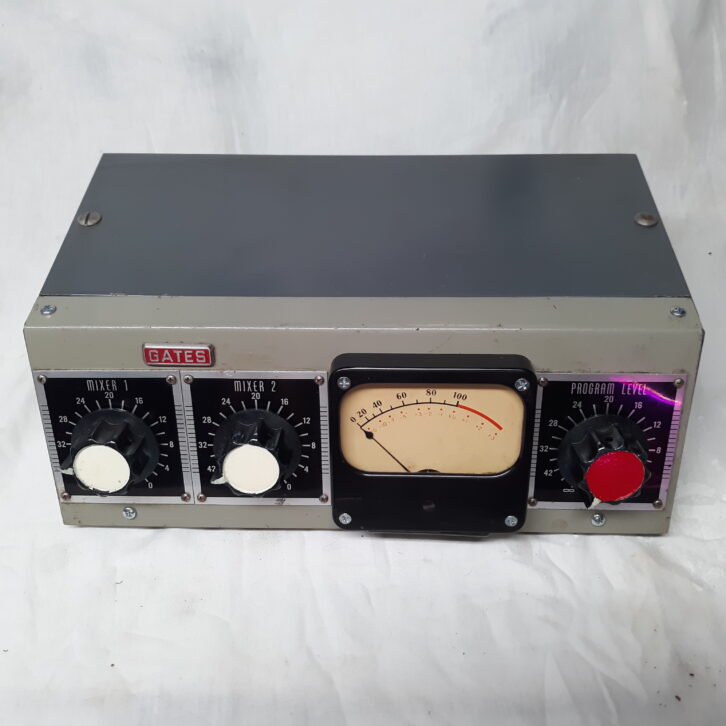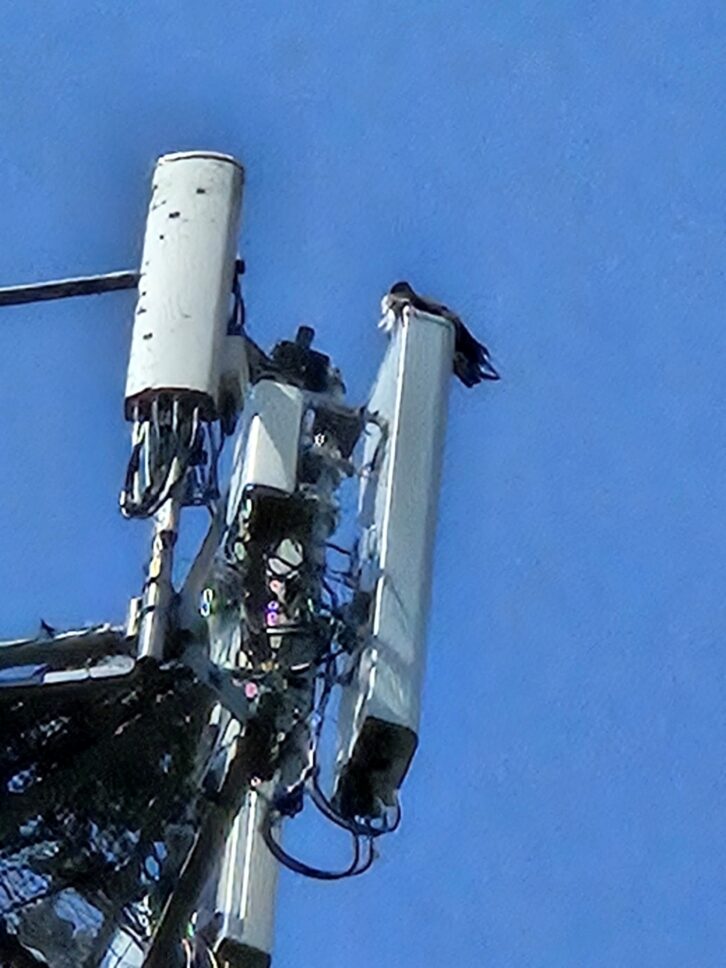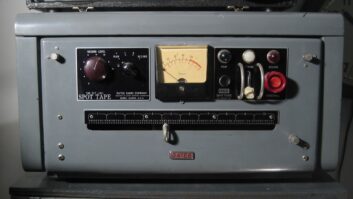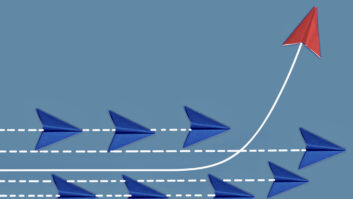Gary D. Street has a Gates Model M-5136 remote mixer that originally was used by WNRG(AM) in Grundy, Va., in 1956 for its remote broadcasts.
Back then WNRG was a 1 kW daytimer on 1250 kHz. Today it is a 5 kW daytimer on 940 kHz, and licensed to Peggy Sue Broadcasting Corp.

On the website worldradiohistory.com we find a Gates catalog from 1957. On page 56 you’ll find this product described as a Biamote Two-Channel Remote Amplifier.
“Remote pickups for either radio or TV probably call for more 2-microphone installations than any other combination,” the catalog stated. “The ‘Biamote’ fills this requirement with fine performance, lightweight rugged design, and a full complement of equipment including a 4-inch illuminated VU meter.”

Gary refurbished the mixer. He had to manufacture the electrolytics, because the “can-type” electrolytics were no longer available. He used shielded cable for the low-level circuits. The cabinet was painted in the same colors that Gates Radio Co. used to use.
Gary was the chief engineer of WNRG(AM) and WMJD(FM) for 25 years, and during that period you may have spotted his byline in Radio World. A mixer schematic was hard to find, but Gary contacted the current owners of the station and found the schematic in one of its file cabinets.

Don’t forget to tell us about your own discoveries of interesting old broadcast gear (and the memories they bring back). Email [email protected].
This stuff isn’t for the birds
Archie Stulc is a broadcast engineer but he’s also the son of farmers, and he has an interest in nature. He had to laugh when he saw our picture of what we called a giant bird’s nest in an out-of-use transmission site.
Even with those open 4-inch holes in the wall he doesn’t believe that this situation was created by a bird. Only a few kinds of birds create a covered nest, he says, and none of the birds he knows build at that size.
Further, Archie said that if this were a nest, there would be a lot more guano across the floor and on the equipment. Also, given the limited access, baby birds would have a problem flying to the outside, so there would be carcasses lying about.
His guess is that the mess was made by a muskrat or similar member of the rodent family. He wonders whether some of those cardboard boxes show signs of being chewed on.
Another perspective
But Richard Hyatt, CPBE, president of Maine Engineering Associates Inc., believes an osprey could fit through the bootless cable penetrations.
He shares the accompanying photo of an osprey nesting among cellular antennas. You can see bullet holes in the antenna at upper left, probably the result of some illicit target practice, the antenna being the target, though Richard adds that ospreys enjoy protections under state and federal wildlife laws including the Migratory Bird Treaty Act.

Some years back, a station found ospreys nesting on its digital STL tower. The birds were using the STL dipole as a “table” to feast on fish; in doing so they blocked the STL signal.
The station solved the problem by installing bird spikes from Bird-X to discourage roosting. Bird-X sells metal and plastic versions; to avoid issues with metal spikes, the station went with plastic.
Don’t get bent out of shape!
You’d get your knickers in a knot too if you found your station’s coaxial cable twisted like shown our final photo.
The picture is courtesy Larry Wilkins, CPBE, director of engineering services for the Alabama Broadcasters Association. He took it during a station inspection.

Proper functioning of a coaxial cable requires its center conductor to remain, well, centered within the outer conductor to assure the best transfer of power. Kinks can displace the center conductor, causing standing waves or what is commonly called VSWR, for Voltage Standing Wave Ratio. The higher the reflected power, the greater the chance of damage to your transmitter from power going back into the transmitter.
So protect your exposed lines to reduce the chance of damage — from vandals, from ice falling off the tower or even from your own contractors. Years ago, I saw a crew of tower riggers using a looped piece of line as a “climbing peg”!
Through efforts like the ABA Engineering Academy, Larry Wilkins has done a yeoman’s job of providing education for the next generation of broadcast engineers, and not just for folks in Alabama. His advocacy of lifelong learning is one reason he was the recipient of the Radio World Excellence in Engineering Award in 2017.
Learn about the academy here under the Engineering tab. The best part of this multi-day training opportunity is that beyond room and meals, it’s free. It’s an excellent opportunity to bring an IT person or engineering assistant up to speed with radio essentials, and to refresh your own skills.
Workbench submissions are encouraged and qualify for SBE recertification credit. Email [email protected].







